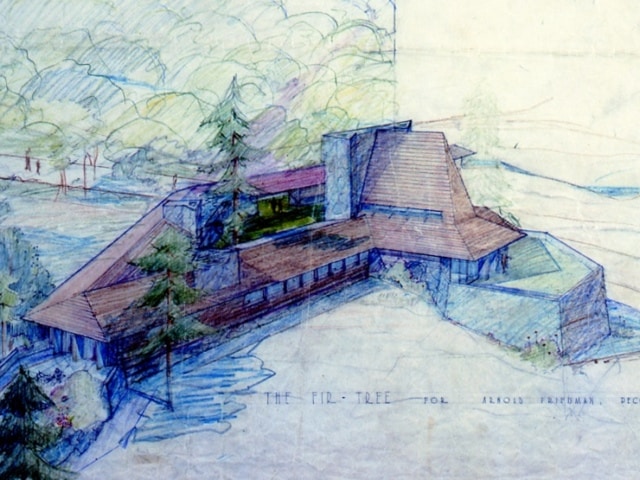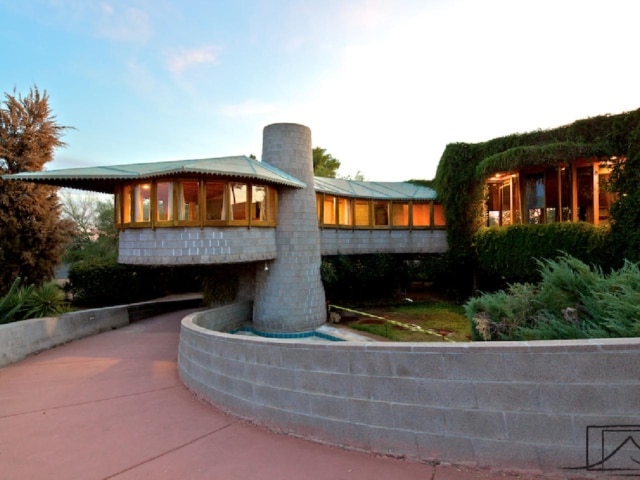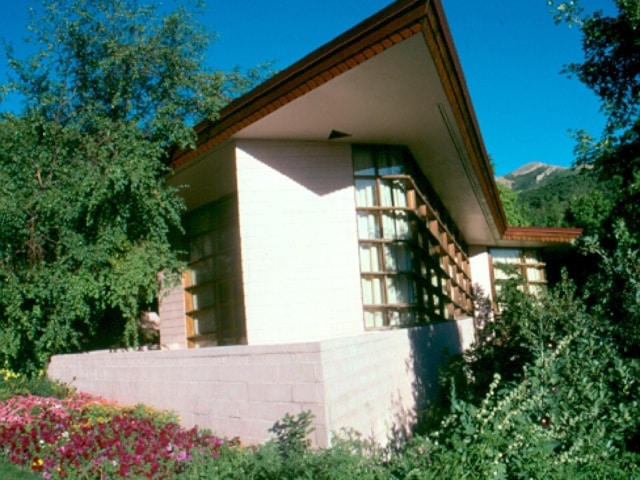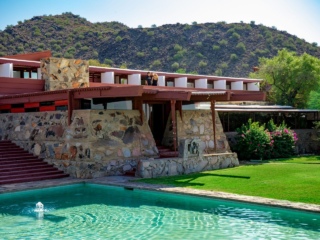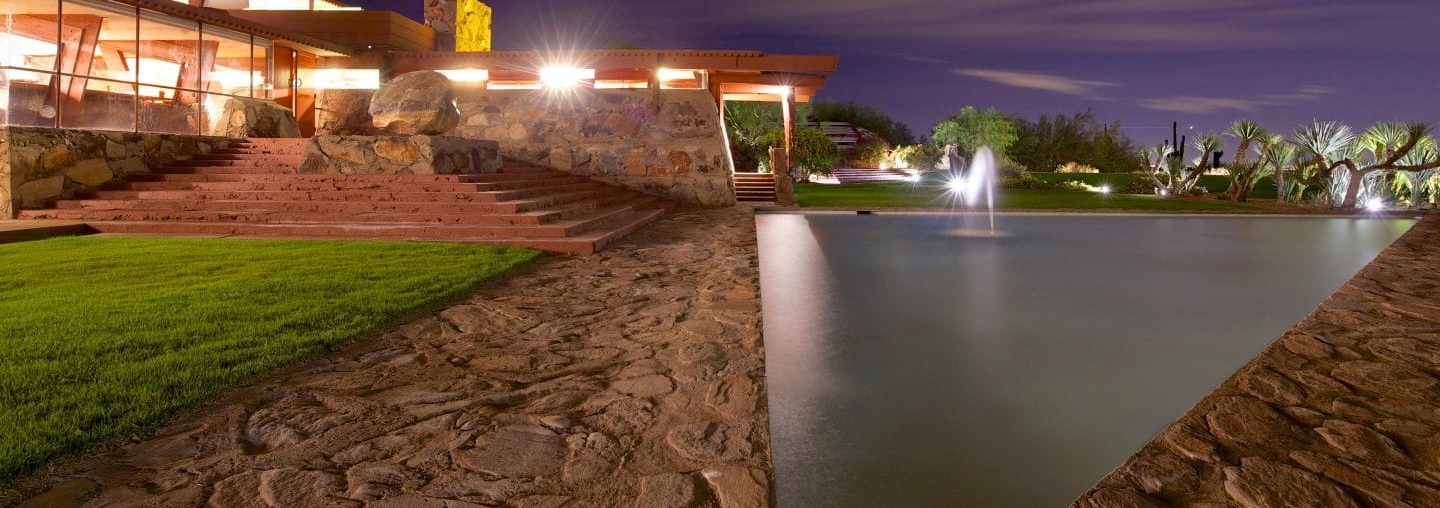
Taliesin West
What began in 1937 as an experiment in camping in the Arizonan desert gradually became a lasting testament to Wright’s creative spirit.
Having purchased several hundred acres of land in the then rural foothills of northeast Scottsdale, Wright began to conceive of a desert utopia comprised of low-slung buildings designed to reflect the sweeping expansiveness of the desert. Always in favor of local materials, Wright would construct Taliesin West largely of “desert masonry”: local rock set in wooden forms and bound by a mixture of cement and desert sand. In so doing, Wright hoped to preserve as much of the desert environment as possible by embedding his structures within the landscape. Canvas roofs bathe the interior spaces with light, while redwood beams provide Wright’s favored Cherokee red accents. Over the years, the complex was continually altered and expanded, eventually including a drafting studio, dining facilities, three theaters, a workshop, Wright’s office and private living quarters, and residences for apprentices and staff. Each building is connected through a series of walkways, terraces, pools and gardens. Wright designed all of the interior furniture and decorations, the majority of which were made on site by the apprentices.
Wright would continue to spend winter in Arizona until his death in 1959. As the buildings of Taliesin West took on greater permanence, steel and fiberglass replaced the less durable materials. Life in the desert was active. The Fellowship’s hands-on architectural education was complimented by an active calendar of lectures, evening entertainment, concerts and theatrical performances. Taliesin West continues to serve as the vibrant home of the Frank Lloyd Wright Foundation. A small number of the Legacy Fellows who lived and worked with Wright continue to live on the grounds.

